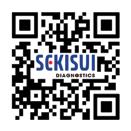Resources for You, Your Patients, & Your Practice

Benefits, Limitations, and Practical
5 Factors to Consider When Choosing a Hematology Analyzer for Your Moderately Complex Lab
MDescapes: Psst…I’ve Got a Secret Secret Bay, Dominica Caribbean
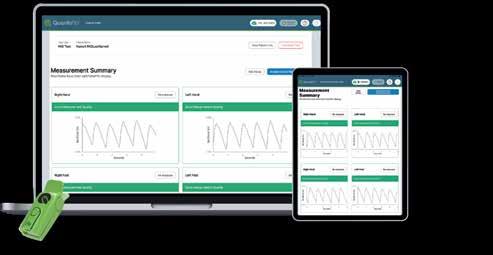






Resources for You, Your Patients, & Your Practice

Benefits, Limitations, and Practical
5 Factors to Consider When Choosing a Hematology Analyzer for Your Moderately Complex Lab
MDescapes: Psst…I’ve Got a Secret Secret Bay, Dominica Caribbean






There are two simple ways to request information about the products and services found in Physicians Office Resource.
1. Go to www.PhysiciansOfficeResource.com and enter the four-digit reference number found next to the product or service into the search field, then request additional information, schedule a demo, or speak with a sales agent all with just a simple click of a button.
2. Find the Business Reply Card in this issue, circle the desired reference numbers, complete the form, and drop into any USPS mailbox. A representative will contact you as quickly as possible to answer your questions.
PUBLISHED BY Medical Education Resources, LLC
PUBLISHER
Aaron R. Medaris amedaris@physiciansofficeresource.com
CEO
Andrew C. Nimmo acnimmo@physiciansofficeresource.com
PRESIDENT
John D. Pasquale jpasquale@pharmaconnect.com
BUSINESS MANAGER
Marci J. Hills mhills@physiciansofficeresource.com
TRAVEL EDITOR
Brandi L. Brower
EDITORIAL BOARD
Shakeel Ahmed, MD
Barry Craig, MLT (NCA), CLC
STAFF WRITER
Dylan J. Chadwick
CREATIVE DIRECTOR PRODUCTION MANAGER
Jessica Elmer
Copyright ©2025
To continue your free subscription of Physicians Office Resource magazine, please fill out the Business Reply Card (BRC) located within this magazine and drop in any United States Post Office mailbox.
If you are a manufacturer of medical products or provide services to medical professionals and would like to advertise your products or services to the nation’s top physicians doing in-office testing, call 801-380-6094 or visit: POR.io for more information.

Point-of-care (POC) testing has transformed clinical decision-making by enabling rapid diagnostic results in outpatient clinics, urgent care centers, emergency departments, and even at the bedside.
Two of the most widely utilized POC diagnostic modalities for infectious diseases are antigen testing and molecular testing (including nucleic acid amplification tests, or NAATs).
12

5 Factors to Consider When Choosing a Hematology Analyzer for Your Moderately Complex Lab
Whether you’re planning to establish a Physician Office Lab, or you’re a practitioner eyeing a new Complete Blood Count (CBC) analyzer, understanding the factors in selecting the right equipment is paramount.
MDescapes: Psst…I’ve Got a Secret Secret Bay, Dominica Caribbean
The surprise, the big reveal is Secret Bay Resort and Residences, a private retreat nestled, literally tucked within, the very verdant, lush landscape on the northwest coast of Dominica Caribbean
Better outcomes. Lower costs. Better patient experience. Better clinician experience.

Gain insights into your patient’s current status with real-time actionable results.
DCA Vantage® Analyzer
Rapid assessment of glycemic control and kidney health
HbA1c
• CLIA-waived
Albumin-to-creatinine ratio (ACR)
• CLIA Moderate Complexity
CLINITEK Status® Connect System
CLIA-waived analyzer for routine urinalysis, including kidney health
• CLINITEK® Microalbumin 2 Strip (ACR)

Customize your patient consultations to enhance physician-patient partnership toward improved outcomes.

OJJAARA for myelofibrosis (MF) with anemia
Start with OJJAARA–The first & only FDA-approved JAK inhibitor indicated specifically for patients who have myelofibrosis with anemia.1,2
OJJAARA was assessed for:
• Total Symptom Score Reduction
• Spleen Volume Reduction
• Transfusion Independence

Explore the data in JAKi-naïve and JAKi-experienced patients
OJJAARA is indicated for the treatment of intermediate or high-risk myelofibrosis (MF), including primary MF or secondary MF [post-polycythemia vera (PV) and postessential thrombocythemia (ET)], in adults with anemia.
Risk of Infections
• Serious (including fatal) infections (e.g., bacterial and viral, including COVID-19) occurred in 13% of patients treated with OJJAARA. Infections regardless of grade occurred in 38% of patients. Delay starting therapy until active infections have resolved. Monitor patients for signs and symptoms of infection and initiate appropriate treatment promptly.
Hepatitis B Reactivation
• Hepatitis B viral load (HBV-DNA titer) increases, with or without associated elevations in alanine transaminase (ALT) or aspartate transaminase (AST), have been reported
in patients with chronic hepatitis B virus (HBV) infection taking Janus Kinase (JAK) inhibitors, including OJJAARA. The effect of OJJAARA on viral replication in patients with chronic HBV infection is unknown. In patients with HBV infections, check hepatitis B serologies prior to starting OJJAARA. If HBsAg and/or anti-HBc antibody is positive, consider consultation with a hepatologist regarding monitoring for reactivation versus prophylactic hepatitis B therapy. Patients with chronic HBV infection who receive OJJAARA should have their chronic HBV infection treated and monitored according to clinical HBV guidelines. Thrombocytopenia and Neutropenia
• New or worsening thrombocytopenia, with platelet count less than 50 × 109/L, was observed in 20% of patients treated with OJJAARA. Eight percent of patients had baseline platelet counts less than 50 × 109/L.
Please see additional Important Safety Information on the following page with accompanying Brief Summary of the full Prescribing Information.
Thrombocytopenia and Neutropenia (cont’d)
• Severe neutropenia, absolute neutrophil count (ANC) less than 0.5 × 109/L, was observed in 2% of patients treated with OJJAARA.
• Assess complete blood counts (CBC), including platelet and neutrophil counts, before initiating treatment and periodically during treatment as clinically indicated. Interrupt dosing or reduce the dose for thrombocytopenia or neutropenia.
Hepatotoxicity
• Two of the 993 patients with MF who received at least one dose of OJJAARA in clinical trials experienced reversible drug-induced liver injury. Overall, new or worsening elevations of ALT and AST (all grades) occurred in 23% and 24%, respectively, of patients treated with OJJAARA; Grade 3 and 4 transaminase elevations occurred in 1% and 0.5% of patients, respectively. New or worsening elevations of total bilirubin occurred in 16% of patients treated with OJJAARA. All total bilirubin elevations were Grades 1-2. The median time to onset of any grade transaminase elevation was 2 months, with 75% of cases occurring within 4 months.
• Delay starting therapy in patients presenting with uncontrolled acute and chronic liver disease until apparent causes have been investigated and treated as clinically indicated. When initiating OJJAARA, refer to dosing in patients with hepatic impairment.
• Monitor liver tests at baseline, every month for 6 months during treatment, then periodically as clinically indicated. If increases in ALT, AST or bilirubin related to treatment are suspected, modify OJJAARA dosage based upon Table 1 within the Prescribing Information.
Severe Cutaneous Adverse Reactions (SCARs)
• Severe cutaneous adverse reactions (SCARs), including toxic epidermal necrolysis (TEN), have been observed in some patients treated with OJJAARA.
• If signs or symptoms of SCARs occur, interrupt OJJAARA until the etiology of the reaction has been determined. Consider early consultation with a dermatologist for evaluation and management.
• If etiology is considered to be associated with OJJAARA, permanently discontinue OJJAARA and do not reintroduce OJJAARA in patients who have experienced SCARs or other life-threatening cutaneous reactions during treatment with OJJAARA.
Major Adverse Cardiovascular Events (MACE)
• Another JAK inhibitor increased the risk of MACE, including cardiovascular death, myocardial infarction, and stroke [compared with those treated with tumor necrosis factor (TNF) blockers] in patients with rheumatoid arthritis, a condition for which OJJAARA is not indicated.
• Consider the benefits and risks for the individual patient prior to initiating or continuing therapy with OJJAARA, particularly in patients who are current or past smokers and patients with other cardiovascular risk factors. Inform patients receiving OJJAARA of the symptoms of serious cardiovascular events and the steps to take if they occur. Thrombosis
• Another JAK inhibitor increased the risk of thrombosis, including deep venous thrombosis, pulmonary embolism, and arterial thrombosis (compared with those treated with TNF blockers) in patients with rheumatoid arthritis, a condition for which OJJAARA is not indicated. Evaluate patients with symptoms of thrombosis and treat appropriately.
Malignancies
• Another JAK inhibitor increased the risk of lymphoma and other malignancies excluding nonmelanoma skin cancer (NMSC) (compared with those treated with TNF blockers) in patients with rheumatoid arthritis, a condition for which OJJAARA is not indicated. Current or past smokers were at increased risk.
• Consider the benefits and risks for the individual patient prior to initiating or continuing therapy with OJJAARA, particularly in patients with a known malignancy (other than a successfully treated NMSC), patients who develop a malignancy, and patients who are current or past smokers.
Adverse Reactions
• The most common adverse reactions (≥20% in either study) are thrombocytopenia, hemorrhage, bacterial infection, fatigue, dizziness, diarrhea, and nausea.
• Momelotinib is an OATP1B1/B3 substrate. Concomitant use with an OATP1B1/B3 inhibitor increases momelotinib maximal concentrations (Cmax) and area under the concentration-time curve (AUC), which may increase the risk of adverse reactions with OJJAARA. Monitor patients concomitantly receiving an OATP1B1/B3 inhibitor for adverse reactions and consider OJJAARA dose modifications.
Breast
• Momelotinib is a BCRP inhibitor. OJJAARA may increase exposure of BCRP substrates, which may increase the risk of BCRP substrate adverse reactions. When administered concomitantly with OJJAARA, initiate rosuvastatin (BCRP substrate) at 5 mg and do not increase to more than 10 mg once daily. Dose adjustment of other BCRP substrates may also be needed. Follow approved product information recommendations for other BCRP substrates.
Pregnancy
• Available data in pregnant women are insufficient. OJJAARA should only be used during pregnancy if the expected benefits to the mother outweigh the potential risks to the fetus.
Lactation
• It is not known whether OJJAARA is excreted in human milk. Because of the potential for serious adverse reactions in a breastfed child, patients should not breastfeed during treatment with OJJAARA, and for at least 1 week after the last dose of OJJAARA.
Females and Males of Reproductive Potential
• Advise females of reproductive potential who are not pregnant to use highly effective contraception during therapy and for at least 1 week after the last dose of OJJAARA.
• Momelotinib exposure increased with severe hepatic impairment (Child-Pugh C). The recommended starting dose of OJJAARA in patients with severe hepatic impairment (Child-Pugh C) is 150 mg orally once daily. No dose modification is recommended for patients with mild hepatic impairment (Child-Pugh A) or moderate hepatic impairment (Child-Pugh B).
Please see Brief Summary of the full Prescribing Information for OJJAARA on the following pages.
References: 1. OJJAARA (momelotinib). Prescribing Information. GSK; 2025. 2. Chifotides HT, Bose P, Verstovsek S. Momelotinib: an emerging treatment for myelofibrosis patients with anemia. J Hematol Oncol. 2021;15(1):7. doi:10.1186/ s13045-021-01157-4
BRIEF SUMMARY OF FULL PRESCRIBING INFORMATION
OJJAARA (momelotinib) tablets, for oral use
The following is a brief summary only; see full prescribing information for complete product information available at www.OJJAARAhcp.com
1 INDICATIONS AND USAGE
OJJAARA is indicated for the treatment of intermediate or high-risk myelofibrosis (MF), including primary MF or secondary MF [post-polycythemia vera (PV) and post-essential thrombocythemia (ET)], in adults with anemia.
4 CONTRAINDICATIONS
None.
5 WARNINGS AND PRECAUTIONS
5.1 Risk of Infections
Serious (including fatal) infections (e.g., bacterial and viral, including COVID-19) occurred in 13% of patients treated with OJJAARA. Infections regardless of grade occurred in 38% of patients treated with OJJAARA [see Adverse Reactions (6.1)]. Delay starting therapy with OJJAARA until active infections have resolved. Monitor patients receiving OJJAARA for signs and symptoms of infection and initiate appropriate treatment promptly.
Hepatitis B Reactivation
Hepatitis B viral load (HBV-DNA titer) increases, with or without associated elevations in alanine transaminase (ALT) or aspartate transaminase (AST), have been reported in patients with chronic hepatitis B virus (HBV) infection taking Janus Kinase (JAK) inhibitors, including OJJAARA. The effect of OJJAARA on viral replication in patients with chronic HBV infection is unknown. In patients with HBV infections, check hepatitis B serologies prior to starting OJJAARA. If HBsAg and/or anti-HBc antibody is positive, consider consultation with a hepatologist regarding monitoring for reactivation versus prophylactic hepatitis B therapy. Patients with chronic HBV infection who receive OJJAARA should have their chronic HBV infection treated and monitored according to clinical HBV guidelines.
5.2 Thrombocytopenia and Neutropenia
OJJAARA can cause thrombocytopenia and neutropenia [see Adverse Reactions (6.1)]
New or worsening thrombocytopenia, with platelet count less than 50 × 109/L, was observed in 20% of patients treated with OJJAARA. Eight percent of patients treated with OJJAARA had baseline platelet counts less than 50 × 109/L. Severe neutropenia, absolute neutrophil count (ANC) less than 0.5 × 109/L, was observed in 2% of patients treated with OJJAARA. Assess complete blood counts (CBC), including platelet and neutrophil counts, before initiating treatment and periodically during treatment as clinically indicated. Interrupt dosing or reduce the dose for thrombocytopenia or neutropenia [see Dosage and Administration (2.4) of full prescribing information]
5.3 Hepatotoxicity
Two of the 993 patients with MF who received at least one dose of OJJAARA in clinical trials experienced reversible drug-induced liver injury. Overall, new or worsening elevations of ALT and AST (all grades) occurred in 23% and 24%, respectively, of patients treated with OJJAARA; Grade 3 and 4 transaminase elevations occurred in 1% and 0.5% of patients, respectively. New or worsening elevations of total bilirubin occurred in 16% of patients treated with OJJAARA. All total bilirubin elevations were Grades 1-2. The median time to onset of any grade transaminase elevation was 2 months, with 75% of cases occurring within 4 months.
Delay starting therapy in patients presenting with uncontrolled acute and chronic liver disease until apparent causes have been investigated and treated as clinically indicated. When initiating OJJAARA, refer to dosing in patients with hepatic impairment [see Dosage and Administration (2.3) of full prescribing information]
Monitor liver tests at baseline, every month for 6 months during treatment, then periodically as clinically indicated. If increases in ALT, AST or bilirubin related to treatment are suspected, modify OJJAARA dosage based upon Table 1 [see Dosage and Administration (2.4) of full prescribing information].
5.4 Severe Cutaneous Adverse Reactions (SCARs)
Severe cutaneous adverse reactions, including toxic epidermal necrolysis (TEN), have been observed in some patients treated with OJJAARA. If signs or symptoms of severe cutaneous reactions occur, interrupt OJJAARA until the etiology of the reaction has been determined. Consider early consultation with a dermatologist for evaluation and management. If etiology is considered to be associated with OJJAARA, permanently discontinue and do not reintroduce OJJAARA in patients who have experienced SCARs or other life-threatening cutaneous reactions during OJJAARA treatment.
Another JAK inhibitor increased the risk of MACE, including cardiovascular death, myocardial infarction, and stroke [compared with those treated with tumor necrosis factor (TNF) blockers] in patients with rheumatoid arthritis, a condition for which OJJAARA is not indicated.
Consider the benefits and risks for the individual patient prior to initiating or continuing therapy with OJJAARA, particularly in patients who are current or past smokers and patients with other cardiovascular risk factors. Inform patients receiving OJJAARA of the symptoms of serious cardiovascular events and the steps to take if they occur.
5.6 Thrombosis
Another JAK inhibitor increased the risk of thrombosis, including deep venous thrombosis, pulmonary embolism, and arterial thrombosis (compared with those treated with TNF blockers) in patients with rheumatoid arthritis, a condition for which OJJAARA is not indicated.
Evaluate patients with symptoms of thrombosis and treat appropriately.
5.7 Malignancies
Another JAK inhibitor increased the risk of lymphoma and other malignancies excluding nonmelanoma skin cancer (NMSC) (compared with those treated with TNF blockers) in patients with rheumatoid arthritis, a condition for which OJJAARA is not indicated. Current or past smokers were at increased risk.
Consider the benefits and risks for the individual patient prior to initiating or continuing therapy with OJJAARA, particularly in patients with a known malignancy (other than a successfully treated NMSC), patients who develop a malignancy, and patients who are current or past smokers.
6 ADVERSE REACTIONS
The following clinically significant adverse reactions are described elsewhere in the labeling:
• Risk of Infections and Hepatitis B Reactivation [see Warnings and Precautions (5.1)]
• Thrombocytopenia and Neutropenia [see Warnings and Precautions (5.2)]
• Hepatotoxicity [see Warnings and Precautions (5.3)]
• Severe Cutaneous Adverse Reactions [see Warnings and Precautions (5.4)]
• Major Adverse Cardiovascular Events [see Warnings and Precautions (5.5)]
• Thrombosis [see Warnings and Precautions (5.6)]
• Malignancies [see Warnings and Precautions (5.7)]
6.1
Because clinical trials are conducted under widely varying conditions, adverse reaction rates observed in the clinical trials of a drug cannot be directly compared with rates in the clinical trials of another drug and may not reflect the rates observed in practice.
The safety of OJJAARA was evaluated in 215 patients in 2 clinical trials (MOMENTUM and SIMPLIFY-1 anemic subgroup [hemoglobin (Hb) <10 g/dL]) [see Clinical Studies (14) of full prescribing information]
MOMENTUM
Patients in the MOMENTUM trial had been previously treated with a JAK inhibitor and were randomly assigned 2:1 to receive double-blind OJJAARA 200 mg orally once daily (n = 130) or danazol 300 mg orally twice daily (n = 65) for 24 weeks, after which they were eligible to receive open-label OJJAARA in an extended treatment phase. Among patients who received OJJAARA, 72% were exposed for 24 weeks or longer and 52% were exposed for 48 weeks or longer [see Clinical Studies (14) of full prescribing information]
Serious adverse reactions occurred in 35% of patients who received OJJAARA during the randomized treatment period of the MOMENTUM trial; the most common serious adverse reactions (≥2%) included bacterial infection (8%), viral infection (5%), hemorrhage (4%), acute kidney injury (3%), pneumonia (3%), pyrexia (3%), thrombosis (3%), syncope (2%), thrombocytopenia (2%), and renal and urinary tract infection (2%). Fatal adverse reactions occurred in 12% of patients who received OJJAARA; the most common (≥2%) fatal adverse reaction was viral infection (5%).
Permanent discontinuation of OJJAARA due to an adverse reaction occurred in 18% of patients during the randomized treatment period of the MOMENTUM trial. Adverse reactions that resulted in permanent discontinuation (≥2%) included viral infection (2%) and thrombocytopenia (2%). Dosage reduction or treatment interruption due to an adverse reaction occurred in 34% of patients. Adverse reactions requiring dosage reduction and/or treatment interruption (≥2%) included thrombocytopenia (13%), bacterial infection (2%), diarrhea (2%), and neutropenia (2%).
(continued on next page)
6.1 Clinical Trials Experience (cont'd)
Among the 130 patients treated with OJJAARA during the randomized treatment period of MOMENTUM, the most common adverse reactions (≥20%) were thrombocytopenia, diarrhea, hemorrhage, and fatigue (Table 1).
Table 1: Adverse Reactions Occurring in ≥5% of Patients Receiving OJJAARA during Randomized Treatment in MOMENTUM
Adverse Reaction OJJAARA n = 130 Danazola n = 65
Receiving OJJAARA during Randomized Treatment in SIMPLIFY-1
Adverse Reactions OJJAARA
aStudy was not designed to evaluate meaningful comparisons of the incidence of adverse reactions across treatment groups. bAdverse reactions graded using CTCAE v.5. cGrouped term includes other related terms. dExcludes opportunistic infections.
SIMPLIFY-1
Patients in the SIMPLIFY-1 trial were JAK inhibitor naïve and randomly assigned 1:1 to receive double-blind OJJAARA 200 mg orally once daily (n = 215) or ruxolitinib 5 to 20 mg orally twice daily (n = 217). Upon completion of the double-blind treatment phase, all patients were eligible to receive OJJAARA during the open-label phase. The safety of OJJAARA was evaluated in the population of patients with MF who were anemic at study entry. SIMPLIFY-1 enrolled 180 anemic patients who received OJJAARA (n = 85) or ruxolitinib (n = 95). Among these anemic patients who received OJJAARA, 78% were exposed for 24 weeks or longer and 61% were exposed for 48 weeks or longer [see Clinical Studies (14) of full prescribing information]
Serious adverse reactions occurred in 28% of the anemic patients who received OJJAARA during the randomized treatment period of the SIMPLIFY-1 trial; the most common serious adverse reactions (≥2%) included bacterial infection (7%), pneumonia (6%), heart failure (4%) arrhythmia (2%), and respiratory failure (2%). A fatal adverse reaction (bacterial infection) occurred in 1 patient who received OJJAARA.
Permanent discontinuation of OJJAARA due to an adverse reaction occurred in 19% of the anemic patients during the randomized treatment period of the SIMPLIFY-1 trial. Adverse reactions that resulted in permanent discontinuation of OJJAARA (≥2%) included bacterial infection (2%), dizziness (2%), fatigue (2%), hypotension (2%), and thrombocytopenia (2%).
Dosage reductions or treatment interruptions of OJJAARA due to an adverse reaction occurred in 21% of patients. Adverse reactions requiring dosage reduction and/or treatment interruption (≥2%) were thrombocytopenia (8%), pneumonia (4%), bacterial infection (2%), abdominal pain (2%), elevated liver enzymes (2%), and hypotension (2%).
Among the 85 anemic patients treated with OJJAARA during the randomized treatment period of SIMPLIFY-1, the most common adverse reactions (≥20%) were dizziness, fatigue, bacterial infection, hemorrhage, thrombocytopenia, diarrhea, and nausea (Table 2).
aStudy was not designed to evaluate meaningful comparisons of the incidence of adverse reactions across treatment groups.
bAdverse reactions graded using CTCAE v.4.03.
cGrouped term includes other related terms.
dExcludes opportunistic infections.
Other Adverse Reactions
Clinically relevant adverse reactions occurring in <5% of anemic patients in the MOMENTUM and SIMPLIFY-1 studies include:
Eye Disorders: Blurred vision.
Infections and Infestations: Fungal infection (excludes opportunistic infections). Nervous System Disorders: Neuralgia, peripheral neuropathy, peripheral motor neuropathy, polyneuropathy.
Vascular Disorders: Flushing.
6.2 Postmarketing Experience
The following adverse reactions have been identified during postapproval use of OJJAARA. Because these reactions are reported voluntarily from a population of uncertain size, it is not always possible to reliably estimate their frequency or establish a causal relationship to drug exposure.
Skin and Subcutaneous Tissue Disorders: Toxic epidermal necrolysis (TEN).
7.1 Effect of Other Drugs on OJJAARA
Organic Anion Transporting Polypeptide (OATP)1B1/B3 Inhibitors
Momelotinib is an OATP1B1/B3 substrate. Concomitant use with an OATP1B1/B3 inhibitor increases momelotinib maximal concentrations (Cmax) and area under the concentration-time curve (AUC) [see Clinical Pharmacology (12.3) of full prescribing information], which may increase the risk of adverse reactions with OJJAARA. Monitor patients concomitantly receiving an OATP1B1/B3 inhibitor for adverse reactions and consider OJJAARA dose modifications [see Dosage and Administration (2.4) of full prescribing information]
7.2 Effect of OJJAARA on Other Drugs
Breast Cancer Resistance Protein (BCRP) Substrates
Momelotinib is a BCRP inhibitor. OJJAARA may increase exposure of BCRP substrates, which may increase the risk of BCRP substrate adverse reactions [see Clinical Pharmacology (12.3) of full prescribing information] When administered concomitantly with OJJAARA, initiate rosuvastatin (BCRP substrate) at 5 mg and do not increase to more than 10 mg once daily. Dose
7 DRUG INTERACTIONS (cont’d)
7.2 Effect of OJJAARA on Other Drugs (cont’d) adjustment of other BCRP substrates may also be needed. Follow approved product information recommendations for other BCRP substrates.
8.1 Pregnancy
Risk Summary
Available data on the use of OJJAARA in pregnant women are insufficient to determine whether there is a drug-associated risk for major birth defects or miscarriage. Based on animal reproduction studies conducted in rats and rabbits, momelotinib may cause embryo-fetal toxicity at exposures lower than the expected exposure in patients receiving 200 mg once daily (see Data) OJJAARA should only be used during pregnancy if the expected benefits to the mother outweigh the potential risks to the fetus.
The background risk of major birth defects and miscarriage for the indicated population is unknown. All pregnancies have a background risk of birth defect, loss, or other adverse outcomes. In the U.S. general population, the estimated background risk of major birth defects and miscarriage in clinically recognized pregnancies is 2% to 4% and 15% to 20%, respectively.
Data
Animal Data: In an embryofetal development study, pregnant rats received momelotinib 2, 6 or 12 mg/kg/day orally, during the period of organogenesis (Gestation Day 6 to 17). Embryo-fetal toxicity (embryonic death, soft tissue anomalies, skeletal variations, and lower mean fetal body weights) was observed at 12 mg/kg (in the presence of maternal toxicity). Skeletal variations were observed (in the absence of maternal toxicity) at 6 mg/kg/day at exposures 3.5 times the exposure at the recommended human dose of 200 mg daily based on combined momelotinib and M21 (a major human metabolite) AUC. No developmental toxicity was observed at 2 mg/kg/day at exposures equivalent to the recommended dose (based on combined momelotinib and M21 AUC).
In an embryofetal developmental study, pregnant rabbits received momelotinib at 7.5, 30 or 60 mg/kg/day orally during the period of organogenesis (Gestation Day 7 to 20). Momelotinib was associated with maternal toxicity at 60 mg/kg/ day, which resulted in reduced mean fetal weight, delayed bone ossification, and an abortion at less than the exposure at the recommended dose (based on combined momelotinib and M21 AUC). No developmental toxicity was observed at lower doses tested in rabbits.
In a pre- and post-natal development study, pregnant rats received momelotinib 2, 6 or 12 mg/kg/day orally from organogenesis through lactation (Gestation Day 6 to lactation Day 20). Decreased pup body weights and embryo-lethality were observed in the dams administered 6 and 12 mg/kg/day. Pup survival was significantly reduced in the 12 mg/kg/day group from birth to Day 4 of lactation. Momelotinib exposure in dams at 12 mg/kg and 6 mg/kg were approximately 2 times the exposure at the recommended dose (based on combined momelotinib and M21 AUC). The exposure in dams at the No Observed Adverse Effect Level (NOAEL) dose of 2 mg/kg was less than the exposure at the recommended dose (based on combined momelotinib and M21 AUC).
8.2 Lactation
Risk Summary
There are no data on the presence of momelotinib or its metabolites in human milk, the effects on the breastfed child, or the effects on milk production. It is not known whether OJJAARA is excreted in human milk. Momelotinib was present in rat pups following nursing from treated dams with adverse effects observed in the offspring. When a drug is present in animal milk, it is likely that the drug will be present in human milk. Because of the potential for serious adverse reactions in a breastfed child, patients should not breastfeed during treatment with OJJAARA, and for at least 1 week after the last dose of OJJAARA.
Data
Animal Data: In a pre- and postnatal development study, momelotinib was administered orally to rats during the lactation period; the drug was detected in plasma of nursing pups, which adversely affected pup survival.
8.3 Females and Males of Reproductive Potential Contraception
Advise females of reproductive potential who are not pregnant to use highly effective contraception during therapy and for at least 1 week after the last dose of OJJAARA.
8.5 Geriatric Use
There were 275 patients aged 65 years and older in the clinical studies for MF [see Clinical Studies (14) of full prescribing information]. Of the total number of OJJAARA-treated patients in these studies, 163/216 (75%) were aged 65 years and older, and 63/216 (29%) were aged 75 years and older. No overall differences in safety or effectiveness of OJJAARA have been observed between patients aged 65 years and older and younger adult patients.
8.6 Hepatic Impairment
The recommended starting dose of OJJAARA in patients with severe hepatic impairment (Child-Pugh C) is 150 mg orally once daily [see Dosage and Administration (2.3) of full prescribing information]. No dose modification is
recommended for patients with mild hepatic impairment (Child-Pugh A) or moderate hepatic impairment (Child-Pugh B).
Momelotinib is extensively metabolized [see Clinical Pharmacology (12.3) of full prescribing information]. Momelotinib exposure increased with severe hepatic impairment (Child-Pugh C). No clinically significant changes in momelotinib exposure were observed in subjects with mild hepatic impairment (Child-Pugh A) or moderate hepatic impairment (Child-Pugh B) [see Clinical Pharmacology (12.3) of full prescribing information].
10 OVERDOSAGE
There is no known antidote for overdose with OJJAARA. If overdose is suspected, the patient should be monitored for signs or symptoms of adverse reactions or effects, and appropriate supportive treatment should be instituted immediately. Further management should be as clinically indicated. Hemodialysis is not expected to enhance the elimination of momelotinib. Consider contacting the Poison Help line (1-800-222-1222) or a medical toxicologist for additional overdose management recommendations.
17 PATIENT COUNSELING
Advise the patient to read the FDA approved patient labeling (Patient Information). Infections
Inform patients that OJJAARA can increase the risk of infections (including COVID-19) and instruct them to promptly report to their healthcare provider any signs and symptoms of infection [see Warnings and Precautions (5.1)].
Thrombocytopenia and Neutropenia
Inform patients that OJJAARA can cause thrombocytopenia and neutropenia, and of the need to monitor complete blood count, including platelet and neutrophil counts, before and during treatment. Advise patients to observe for and report any bleeding to their healthcare provider [see Warnings and Precautions (5.2)]
Hepatotoxicity
Inform patients that OJJAARA can cause hepatotoxicity, and of the need to monitor liver blood tests before and during treatment [see Warnings and Precautions (5.3)].
Severe Cutaneous Adverse Reactions (SCARs)
Inform patients that SCARs have been reported in some patients treated with OJJAARA and instruct them to promptly report any signs and symptoms of SCARs to their healthcare provider [see Warnings and Precautions (5.4)]
Major Adverse Cardiovascular Events (MACE)
Advise patients that events of MACE including myocardial infarction, stroke, and cardiovascular death have been reported in clinical studies with another JAK inhibitor used to treat rheumatoid arthritis, a condition for which OJJAARA is not indicated. Advise patients, especially current or past smokers and patients with other cardiovascular risk factors, to be alert for the development of signs and symptoms of cardiovascular events and to report them to their healthcare provider [see Warnings and Precautions (5.5)].
Thrombosis
Advise patients that events of deep vein thrombosis (DVT) and pulmonary embolism (PE) have been reported in clinical studies with another JAK-inhibitor used to treat rheumatoid arthritis, a condition for which OJJAARA is not indicated. Advise patients to tell their healthcare provider if they develop any signs or symptoms of a DVT or PE [see Warnings and Precautions (5.6)].
Malignancies
Advise patients, especially current or past smokers, that lymphoma and other malignancies (excluding non-melanoma skin cancers (NMSC)) have been reported in clinical studies with another JAK inhibitor used to treat rheumatoid arthritis, a condition for which OJJAARA is not indicated [see Warnings and Precautions (5.7)].
Pregnancy
• Advise pregnant women and females of reproductive potential of the potential risk to a fetus. Advise females to inform their prescriber of a known or suspected pregnancy [see Use in Specific Populations (8.1)]
• Advise females of reproductive potential who are not pregnant to use highly effective contraception during therapy and for 1 week after the last dose of OJJAARA [see Use in Specific Populations (8.3)]
Lactation
Advise patients not to breastfeed during treatment with OJJAARA and for at least 1 week after the last dose of OJJAARA [see Use in Specific Populations (8.2)]
Trademarks are owned by or licensed to the GSK group of companies.
GlaxoSmithKline Durham, NC 27701
©2025 GSK group of companies or its licensor.
OJJ:1BRS 05/25
©2025 GSK or licensor.
PMUS-MMLJRNA250003 July 2025 Produced in USA.
from
Your Patients Trust YOU To Find Their Peripheral Artery Disease
• High-risk patients include those over 65, diabetics, and smokers.
• If left untreated, 25% of patients with PAD will experience a heart attack or stroke within 5 years.
• PAD symptoms are often mistaken for arthritis or old age.
The simpleABI Cuff-Link System is Easy to Learn and Use.
• With a push-button remote, automatic calculations, and waveforms, it’s incredibly user-friendly.
• Reports are straightforward to save and share since the system is PC-based.
Outstanding Value and Reimbursements
• The system pays for itself in less than a year with just one test per week.
• Medicare reimbursements vary by exam and location, averaging from $91 to $174.
From Bindex Medical
Comparable to DXA
Extensive clinical research has proven Bindex to be 90% accurate in detecting osteoporosis. It can replace nearly 70% of DXA scans for patients with suspected osteoporosis.
Fast and effective
Using safe pulse-echo ultrasound to measure cortical bone thickness, Bindex analyzes bone density in just seconds.
Easy to use anywhere
Lightweight and pocket-sized, Bindex allows patients to receive on-the-spot bone density scans in doctors’ offices, hospitals and clinics and at home.
From Morningside Medical



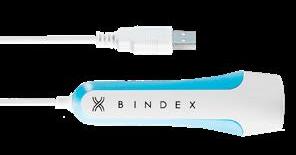

Standard cognitive screening tools like MMSE/ MOCA are exactly that; screening tools. The technology is there to test the patients that fail these screening tools right in your office. Get clinically relevant information about your patients’ brain performance, while generating additional reimbursement for the practice, leading to earlier diagnosis and more accurate referrals.
Aids in clear diagnosis • Strong Reimbursement • Improves Patient Outcomes
• Easy for any staff to perform • Cognitive Testing / Mental Health • Sudomotor Function / Neuropathy • Vestibular Testing / Fall Prevention • Autonomic Function/ Cardiovascular Risk
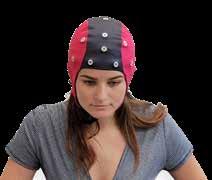

Benefits, Limitations, and Practical Considerations
BY ADAM IRVINE, STAFF WRITER, PHYSICIANS OFFICE RESOURCE
Point-of-care (POC) testing has transformed clinical decision-making by enabling rapid diagnostic results in outpatient clinics, urgent care centers, emergency departments, and even at the bedside. Two of the most widely utilized POC diagnostic modalities for infectious diseases are antigen testing and molecular testing (including nucleic acid amplification tests, or NAATs).
While both aim to identify the presence of a pathogen, their methodologies, performance characteristics, and practical implications differ significantly. Understanding these differences is essential for physicians to select the most appropriate test for a given patient, clinical setting, and operational workflow.
Antigen Testing
Antigen tests detect specific proteins on the surface of a pathogen, often using lateral flow immunoassay technology. These tests are generally designed for rapid detection, with turnaround times as short as 10–30 minutes. Common POC antigen tests include those for influenza, respiratory syncytial virus (RSV), group A streptococcus, and SARS-CoV-2.
Molecular Testing
Molecular tests detect the genetic material (DNA or RNA) of a pathogen, usually via polymerase chain reaction (PCR) or other nucleic acid amplification techniques such as isothermal amplification (e.g., LAMP, TMA). Historically, these were laboratory-based due to the complexity of equipment and processes. However, recent advances in microfluidics, cartridge-based platforms, and portable analyzers have brought molecular testing into the POC environment, with turnaround times as short as 15–45 minutes.
1. Speed and Simplicity
Antigen tests typically provide results in less than 30 minutes without requiring specialized laboratory equipment or personnel. This is particularly beneficial in acute care settings where immediate treatment or isolation decisions are needed.
2. Cost-Effectiveness
Antigen tests are generally less expensive than molecular tests, both in terms of equipment and per-test cost. For high-volume outpatient clinics or resource-limited settings, this can be a significant advantage.
3. Ease of Use
Most antigen tests are CLIA-waived, enabling use in a wide range of clinical settings without the need for high-complexity laboratory certification. Minimal training is required for staff, and sample preparation is often straightforward.
4. Suitability for High Prevalence Scenarios
When disease prevalence is high, the positive predictive value (PPV) of antigen testing increases, making rapid antigen results particularly useful during peak seasonal outbreaks.
Drawbacks of Antigen Testing at the POC
1. Lower Sensitivity
Antigen tests generally have lower sensitivity than molecular tests, especially in cases with low viral or bacterial load. This increases the risk of false-negative results, particularly early or late in the infection course.
2. Variable Performance by Pathogen
While some antigen tests (e.g., group A strep) have relatively strong performance, others (e.g., influenza and SARS-CoV-2) may vary considerably in sensitivity depending on the manufacturer, specimen quality, and timing of testing.
3. Need for Confirmatory Testing
Because of their reduced sensitivity, antigen test negatives may require follow-up molecular testing when clinical suspicion remains high. This can delay final diagnosis and treatment in some cases.
1. High Sensitivity and Specificity
Molecular assays are generally considered the gold standard for infectious disease detection due to their ability to amplify and detect minute amounts of pathogen genetic material. Sensitivity often exceeds 95%, even in early infection.
2. Broad Pathogen Detection
Many modern molecular POC platforms are multiplex-capable, enabling detection of multiple pathogens from a single sample (e.g., SARS-CoV-2, influenza A/B, and RSV in one assay). This is especially valuable in patients with overlapping clinical presentations.
3. Improved Diagnostic Confidence
The high accuracy of molecular testing reduces the need for confirmatory testing and minimizes false negatives, enabling more confident clinical decision-making.
4. Utility in Low Prevalence Settings
Because of their high specificity, molecular tests maintain strong positive predictive value even when disease prevalence is low—something antigen tests struggle with due to higher false-positive rates under these conditions.
1. Higher Cost
Molecular POC instruments and consumables are significantly more expensive than antigen tests. This includes the upfront investment in analyzers and the per-cartridge cost for each test.
2. Longer Turnaround Time
Although much faster than traditional lab-based PCR, molecular POC tests typically require 15–45 minutes to produce results—longer than most rapid antigen assays. In high-volume settings, this can create workflow bottlenecks.
3. More Complex Operation
While simplified compared to central lab PCR, many molecular systems still require more operator training and careful handling to prevent contamination. Some platforms are CLIA moderate complexity, restricting use in certain settings.
Target Pathogen surface proteins
Technology Lateral flow immunoassay
Typical Turnaround Time
Sensitivity
Specificity
Best Use Case
10–30 minutes
Moderate (50–90%, pathogen-dependent)
High (>95%)
High-prevalence settings, rapid screening
Cost per Test Low
Pathogen genetic material (DNA/RNA)
PCR or other nucleic acid amplification (NAAT)
15–45 minutes
High (>95% for most pathogens)
Very high (>98%)
High accuracy needed, low-prevalence settings, high-risk patients
Moderate to high
Equipment Needs Minimal Analyzer required
Complexity
Multiplex Capability
Confirmatory Testing Needed
Operational Advantage
Usually CLIA-waived
Rare
Sometimes, especially with negatives in high-suspicion cases
Speed, simplicity, low cost
4. Maintenance and Supply Chain Considerations
POC molecular instruments require calibration, periodic maintenance, and reliable access to proprietary test cartridges—factors that may complicate deployment in smaller or resource-limited facilities.
To illustrate the differences, consider SARS-CoV-2 testing:
· Antigen POC Tests: Sensitivity around 80–85% in symptomatic patients within the first five days of symptom onset; specificity typically >97%.
· Molecular POC Tests: Sensitivity >95% and specificity >99% across a wider time frame, including pre-symptomatic and later stages of illness.
In influenza, antigen tests have sensitivities ranging from 50–80% depending on the patient population and test brand, while molecular influenza assays typically exceed 95% sensitivity.
Choosing between antigen and molecular testing at the POC involves balancing diagnostic accuracy, turnaround time, cost, and clinical urgency.
· When speed outweighs sensitivity: In scenarios such as school or workplace clearance, rapid antigen testing offers a practical solution, particularly when positive results will be acted upon immediately and negative results are unlikely to alter management.
· When accuracy is paramount: In high-risk patient populations (immunocompromised, elderly, comorbidities) or when the consequences of a missed diagnosis are significant, molecular testing is the preferred choice.
· Hybrid approaches: Some facilities deploy antigen testing for initial screening with reflex molecular testing for negatives in high-suspicion cases. This strategy can balance speed, cost, and accuracy.
Often CLIA-moderate complexity
Common (e.g., respiratory panels)
Rarely needed
Accuracy, pathogen coverage, diagnostic confidence
When implementing POC testing protocols, physicians should consider:
1. Regulatory Requirements – Determine whether the test is CLIA-waived or moderate complexity.
2. Staff Training – Even simple tests require competency training and ongoing quality control.
3. Workflow Integration – Consider how testing fits into patient flow and result documentation in the EHR.
4. Cost-Benefit Analysis – Factor in not only per-test cost but also the potential cost savings from reduced follow-up visits, hospitalizations, or unnecessary treatments.
5. Supply Chain Reliability – Ensure consistent access to test kits, reagents, and maintenance services.
The gap between antigen and molecular testing is narrowing. Emerging technologies such as ultrasensitive digital immunoassays are boosting antigen sensitivity to near-PCR levels, while molecular test manufacturers continue to reduce turnaround times and device costs. Additionally, the expansion of multiplex respiratory panels in POC formats will allow physicians to rapidly differentiate between pathogens that present with similar symptoms, streamlining both diagnosis and treatment.
· Antigen tests offer speed, simplicity, and affordability, making them valuable in high-prevalence or resource-limited settings, but their lower sensitivity requires careful interpretation.
· Molecular tests deliver superior accuracy and diagnostic confidence, especially in low-prevalence settings or high-risk patients, but come with higher costs and slightly longer turnaround times.
· A strategic, patient-centered approach—possibly combining both modalities—can optimize care while balancing cost and efficiency in point-of-care settings.
I-STAT SYSTEM
From Abbott Point of Care
The handheld i-STAT System offers a broad menu of diagnostic tests at the patient’s side in just minutes. With just a few drops of blood, the i-STAT System delivers real time, lab-accurate results for a wide range of tests, including chemistries, blood gas, coagulation, cardiac markers, and more. Minimize delays and wasted time with on-side tests. Easy, intuitive operation.
For intended use and complete product information, visit pointofcare.abbott.


FULL COMPLEMENT OF CLIA-WAIVED
CHEMISTRY TESTS PICCOLO XPRESS® CHEMISTRY ANALYZER
From Abbott Point of Care
The Piccolo Xpress Chemistry Analyzer provides physician offices with lab-accurate results for a broad range of CLIA-waived general chemistry tests, including metabolic panels, lipids, live, and kidney function, and more with just 100 microliters of blood. Easy to use, the PIccolo Xpress provides results during a patient’s visit, accelerating treatment decisions, increasing efficiency, and supporting patient satisfaction. Automated quality control on every test helps ensure accuracy.


TOXICOLOGY SCREENING SIMPLIFIED ABBOTT’S IMMTOX
270 BENCHTOP ANALYZER NOW WITH 14 ASSAYS
CLIA CATEGORIZED AS MODERATE COMPLEXITY
From Abbott
The ImmTox270 benchtop analyzer offers comprehensive toxicology screening solutions for physician offices, treatment centers and independent laboratories.
Broad test menu with over 20 assays to choose from including 14 that are now available as moderately complex.
With complete laboratory solutions from consultation to licensure, and compliance the Abbott Clinical Laboratory Solutions team has you covered.


and wasted
For in vitro diagnostic use only. This material is intended for a U.S. audience only. i-STAT is a trademark of Abbott. Physician Office Resource i-STAT Product Description — US 3064.REV1 08/20 Easy, Integrated With-Patient i-STAT
EARLY DETECTION AND MANAGEMENT OF CHRONIC CONDITIONS WITH DCA VANTAGE® AND CLINITEK STATUS®+ ANALYZERS
From Siemens Healthineers
Siemens Healthineers DCA Vantage® and CLINITEK Status® family of analyzers provide Hemoglobin A1c (HbA1c) and albumin-to-creatinine ratio (ACR) testing at the point of care. Monitor glycemic control in patients with diabetes and screening for kidney disease in patients at-risk, in-office. Enable real-time consultation, eliminating loss to follow-up. Improve the patient experience and overall outcome by providing actionable results in minutes.
CLIA-waived: DCA HbA1c; CLINITEK Microalbumin 2 (ACR) CLIA Moderate Complexity: DCA® Microalbumin/Creatinine (ACR) 5409


From Semler Scientific
QuantaFlo® PAD is an easy to use, accurate, point of care, non-invasive solution that aids in the early detection of peripheral arterial disease (PAD). This FDA cleared device can be administered by a medical aide in less than 5 minutes. As published in the Journal of Vascular Surgery and the American Journal of Preventive Medicine, QuantaFlo detected undiagnosed PAD in 31.6% of patients +65.1 QuantaFlo is portable and integrates with other technologies and platforms. It is ideal for both home and clinic environments.
1. Smolderen KG, Ameli O, Chaisson CE, Heath K, Mena-Hurtado C. Peripheral Artery Disease Screening in the Community and 1-Year Mortality, Cardiovascular Events, and Adverse Limb Events, AJPM Focus (2022), https://doi.org/10.1016/j.focus.2022.100016
From Nova Biomedical
The U.S. FDA has cleared Nova Primary as a blood glucose reference analyzer that fills the need for a new reference analyzer to replace the YSI STAT PLUS 2300 (YSI, Inc., Yellow Springs, OH). Manufacturers of blood glucose measuring devices and clinical diabetes researchers have relied on the YSI 2300 as a reference and correlation analyzer. However, YSI, Inc. no longer supports the analyzer, and its discontinuation has left a critical industry void. With today’s FDA clearance, Nova Primary from Nova Biomedical is now available in the U.S. and worldwide.




I G H T N O W .
Patients with Peripheral Artery Disease (PAD) who may be facing a heart attack, stroke, amputation, or even death within the next 5 years
1 O U T O F 3 H A S P A D A N D T H E Y P R O B A B L Y D O N ’ T K N O W I T . A
Diabetics Smokers Over age 65
P E R I P H E R A L
Healthy Artery

Diseased Artery

Atherosclerosis
(PAD) is an often silent condition where narrowed arteries reduce blood flow to the legs, causing symptoms like leg pain, numbness, and slow-healing wounds.
DON’T LET PAD SNEAK UP ON YOU OR THESE PATIENTS.
50% report no symptoms, while those that do attribute their pain to arthritis or “old age”.
I N T R O D U C I N G

N o n - i n v a s i v e , p a t i e n t - f r i e n d l y t e s t
A C C U R A T E
A c c u r a c y e q u a l o r b e t t e r t h a n D o p p l e r A B I .
U s e f u l f o r d i a b e t i c s w i t h c a l c i f i e d a r t e r i e s
R E I M B U R S A B L E
r .
G r e a t R O I : t h e t y p i c a l i n t e r n i s t h a s 8 0 0 M e d i c a r e p a t i e n t s , p e r A C P
T
l e s s t h a n t w o m o n t h s .
C P T 9 3 9 2 3 ( A B I w / e x e r
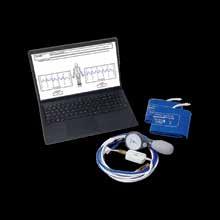

THESE PATIENTS TRUST YOU TO FIND THEIR PAD
before they have a heart attack, stroke, or even die PAD also leads to significant disability and reduced quality of life.


For over 45 years, Newman Medical has been a leader in vascular innovation The ABI-Q system continues that legacy with fast, accurate results you can trust
Scan for more info


BY NITSAN MAAYAN-RABINOWICH, CHIEF STRATEGY OFFICER, SIGHT DIAGNOSTICS
Whether you’re planning to establish a moderately complex Physician Office Lab, or you’re an experienced practitioner eyeing a new Complete Blood Count (CBC) analyzer for your existing facility, understanding the key factors in selecting the right equipment is paramount. This article is designed to help you navigate the selection process of a CBC analyzer that will align seamlessly with your clinical demands and operational workflows, enabling you to provide superior patient care.
When integrating a new laboratory device, the top priority is to ensure that it delivers accurate results and meets your specific clinical requirements. While many CBC analyzers might provide precise readings, inferior performances often manifest through a higher rate of invalidations and suppressed results. If results are absent or reported with measurement issues (flagged), local lab policies typically mandate further reflex testing or a smear review. This not only hampers healthcare providers’ ability to make swift clinical decisions, but may also involve sending samples to an external laboratory, which is both costly and time-consuming. Crucially, the lag in verifying lab results delays treatment and heightens patient anxiety. When a CBC analyzer consistently falls short in delivering actionable results (results devoid of invalidations or suppressions), it defeats the purpose of having an on-site lab solution, intended to offer rapid quality care directly at the point of service. Several factors affect the rate of invalidated results, such as the device’s analytical range (reportable and display), its precision in flagging results, the extent of the abnormality flagging menu, and the detail in its white blood cell differential.
So, how does it work, and why are these factors crucial in affecting a CBC analyzer’s effectiveness in producing actionable results?
Analytical measuring range - this refers to the range of values that the CBC device can accurately measure and report. When a CBC parameter level is outside the analytical range of the analyzer, the result might be suppressed or marked as invalidated. This is a key indicator of the device’s analytical capabilities. The challenge with the CBC often lies in accurately detecting lower levels of counts, which are difficult to process, yet crucial to measure, given that such conditions typically involve higher risk and require swift decision-making. Given that CBC analyzers offer varying reportable ranges, dedicating time to researching and determining which device best aligns with your clinical needs and patient demographics is crucial. This approach can markedly decrease the need to send out tests for external analysis.
Flagging Sensitivity and Specificity: Flagging sensitivity in CBC analyzers refers to the device’s proficiency in identifying and raising a flag to any hematology abnormalities or measurement discrepancies. Conversely, Flagging Specificity refers to the analyzer’s ability to correctly identify and flag abnormal results without generating false alarms. The importance of flagging sensitivity is widely acknowledged; it ensures that no significant measurement mishaps or essential clinical inputs slip through the cracks. That said, flagging specificity is crucial as well, as it directly influences workflow efficiency. Inversely, as the flagging specificity rate drops, the incidence of false positives — where normal tests are inaccurately labeled as abnormal—increases. This not only leads to unnecessary reflex testing or manual smears, but also causes delays in treatment and detracts from the cost-effectiveness of the device. For example, a CBC analyzer with a 70% flagging specificity suggests
that in 30% of the cases, the analyzer will erroneously signal abnormal results (false positives). This indicates that in 30% of the cases, reflex testing could be avoided. The good news is, that thanks to modern advancements, the market now offers CBC analyzers with a flagging specificity of over 90%, which can significantly streamline your operations.
The Depth and Specificity of a CBC’s Flagging Menu refers to the number of specific flags for distinct CBC abnormalities such as immature granulocytes, nRBCs, atypical lymphocytes, platelets clumps, blasts, and others. A rich flagging menu enhances the analyzer’s ability to identify distinct abnormalities more accurately. The precise identification minimizes the risk of results being invalidated or suppressed by providing clear insights into potential abnormalities rather than broadly flagging results as abnormal. In contrast, analyzers with limited or generic flagging options might lead to the unnecessary manual examination of samples that are not actually abnormal. A rich flagging menu mitigates this by accurately identifying borderline or slightly abnormal results, which may not require further analysis. The bottom line is, when selecting a CBC analyzer for your practice, the number and variety of specificity of abnormality flags it offers should be a key consideration - the more, the merrier.
The number of white blood cell (WBC) differentials (3 vs. 5 diff) in a CBC analyzer refers to the number of different types of white blood cells the analyzer can identify and enumerate separately. Analyzers with a 5-diff capability offer more comprehensive and nuanced results by distinguishing among a greater variety of white blood cells, thus providing clinicians with deeper insights for accurate diagnoses, differentiating infections from blood disorders, and formulating effective treatment strategies. In contrast, analyzers with limited differential capabilities (3-diff) might lead to incomplete data, requiring additional tests or referrals to specialized external labs, thereby increasing expenses and delaying critical care. While 3-diff analyzers may still be useful for many standard blood count purposes, their limitations in terms of specificity and sensitivity can result in more frequent invalidations and suppressed results compared to the more advanced 5-diff analyzers. When an abnormality occurs in one of the cell types grouped into one category (neutrophils, eosinophils, and basophils), this grouping can lead to invalidations if there are abnormalities in one of these subtypes, as the analyzer cannot specify which type is affected. 3-diff CBC analyzers are estimated to report at least 50% more of the total number of samples generating a suspicious flag than their 5-diff counterparts, ultimately reducing laboratory time and costs related to sample processing and shipping¹ .
To learn more about a specific CBC analyzers’ clinical performances and features, we recommend you read their latest FDA510(k) summaries and marketing brochures, or simply ask your sales representative for this information. Additionally, you can find detailed insights in the device’s Instructions For Use or Operators Manual.
On average, children under the age of one visit their primary care physician four times a year, which is 2 to 4 times more than any other pediatric age group.² Fever ranks as a top reason for medical consultation, while for babies under three months, and febrile, the standard recommendation is an in-hospital observation.3 For children older than three months, it’s typically recommended that they initially visit a primary care physician before heading to the emergency department.4 A CBC with a differential, or at a minimum a WBC count, is advised for children with fever.5 Moreover, the American Academy of Pediatrics (AAP) recommends CBC screening for anemia in the 9 to 12 months age bracket,6 as adequate iron stores are critical for normal cognitive development. Therefore, if you provide or plan to provide care to pediatric patients, ensuring your on-site CBC device is suitable for children aged three months and older is essential.
For those treating pediatric patients, it’s widely recognized that up to a certain age, using capillary blood for a CBC test is far more convenient than a venous draw. The capillary method is easier to collect, requires a smaller blood volume, and is less intimidating and painful for both the patient and their caregiver. Capillary sampling is also an appealing option for populations where conventional sampling methods face difficulties, such as elderly, psychiatric, and oncology patients.
Until recently, finding a tabletop CBC analyzer that was FDA-cleared for capillary blood testing was nearly impossible. Nowadays, there are several new technologies that are FDA-cleared for CBC capillary blood testing via a tube or directly from the finger.
If your facility already operates laboratory equipment, you’re probably well-versed in the rigorous quality control and result verification procedures mandated by the Clinical Laboratory Improvement Amendments (CLIA). Typically, you probably spend considerable daily time on quality control procedures, documentation, results review, and related tasks. Imagine reallocating this time towards activities that generate more value or avoiding the inconvenience of informing a patient that their test cannot be conducted because the device is undergoing its daily quality control. The good news is that this is now achievable for a select number of CBC analyzers through the implementation of an Individualized Quality Control Plan (IQCP).7 IQCP is a tailor-made quality control strategy endorsed by CLIA for devices with advanced and robust internal controls that ensure consistent performance and calibration over time. By implementing an IQCP, you can significantly cut down the daily QC procedures from once a day to a few times a month, saving time, money, and energy while still adhering to compliance measures. Since this option is available with only a limited number of devices, the best way to determine whether a CBC device is eligible for IQCP is to ask your sales representative.
Have you ever wondered how much time you and your team dedicate to cleaning and maintaining your CBC analyzer? From daily startup and shutdown cleaning through weekly flush tubing, reagent replacement, and aperture cleaning to monthly tubing replacement, not to mention regular internal component cleanings and preventative maintenance checks, these tasks, while essential for the accurate operation of liquid reagent-based CBC analyzers, are notably time-consuming and exhausting.
Fortunately, cartridge-based CBC analyzers, free from liquid reagents, present a solution to these exhaustive procedures. This new generation of devices utilizes single-use, disposable test kits containing a cartridge and everything required to perform the CBC test. Unlike liquid reagents, these kits have a long shelf life and do not require special storage conditions. The device itself contains no tubes or reagents, so traditional cleaning or maintenance virtually disappears, freeing up your team to focus on what matters most — delivering quality, efficient patient care without the burden of non-essential tasks.
Choosing the right CBC analyzer involves a careful evaluation beyond just clinical performance, such as analytical precision, flagging specificity and menu richness, and WBC differential count. It’s equally important to consider operational aspects, like the ease of maintenance, IQCP eligibility, adaptability to various age groups, and blood collection techniques. The objective is to select a device that not only ensures accurate and timely results but also seamlessly integrates into your practice’s workflow, thereby elevating the standard of care provided.
1. “Hematology analyzers: 3-part or 5-part, that is the question”, Boule.com, 2019
2. “Primary Care in the United States: A Chartbook of Facts and Statistics”, Robert Graham Center, February 2021
3. ”Fever in children: pearls and pitfalls”, Barbi E, Marzuillo P, Neri E, Naviglio S, Krauss BS, , Pubmed Central, September 2017
4. “A fever is rarely a reason to go to the hospital — here’s what to do if you or your child has a fever”, Business Insider, December 2020
5. “Fever Without a Focus Workup”, Muhammad Waseem, Medscape, June 2023
6. “Clinical Report—Diagnosis and Prevention of Iron Deficiency and Iron-Deficiency Anemia in Infants and Young Children (0–3 Years of Age)”, Robert D. Baker, MD, PhD, Frank R. Greer, MD, and THE COMMITTEE ON NUTRITION ,American Academy of Pediatrics, 2010
7. Individualized Quality Control Plan (IQCP) | CDC


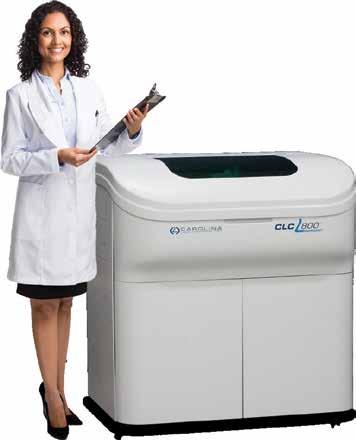
From Sekisui Diagnostics
• 3-in-1 Multiplex – Detects COVID-19, Flu A and Flu B from one swab, in one test
• Minimal Hands-On Time – Can be performed in a CLIA-waived setting in a few simple steps
• Convenient– No maintenance or calibration, ready for testing any time
• Accessible and Flexible – Suitable for any facility
• Exceptional Support – Experienced support teams and online training modules to help streamline your implementation


From Sekisui Diagnostics
The Metrix® COVID-19 is a novel technology includes clinical claims for symptomatic and asymptomatic individuals, along with dualsample types for nasal or saliva, allowing for an enhanced point-ofcare testing experience. The reader is compact and robust, it’s ideal for professional use in diverse locations, including clinics and mobile health units. It’s a maintenance free device with no calibration step required.

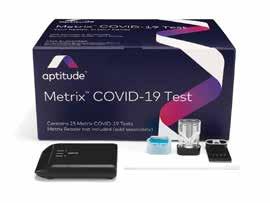
From Sekisui Diagnostics
The OSOM® COVID-19 Antigen Rapid Test is a lateral flow immunoassay that detects the SARS-CoV-2 nucleocapsid protein with a nasal swab in only 15 minutes at the point-of-care. The test is intended to be used by healthcare professionals or operators on patients suspected of COVID-19 within the first 7 days of symptom onset. The clinical performance compares favorably against polymerase chain reaction methodology, with a positive percent agreement of 95.1% and a negative percent agreement of 97%.
OSOM® COVID-19 Antigen Rapid Test has not been FDA cleared or approved. It is authorized by FDA under an EUA for prescription use only. It has been authorized only for the detection of SARS-CoV-2 antigen, not for any other viruses or pathogens and is only authorized for the duration of the declaration that circumstances exist justifying the authorization of emergency use of in vitro diagnostics for detection and/or diagnosis of COVID-19 under Section 564(b)(1) of the Federal Food, Drug, and Cosmetic Act, 21 U.S.C S360bbb-3(b)(1), unless the authorization is terminated or revoked sooner.
5417

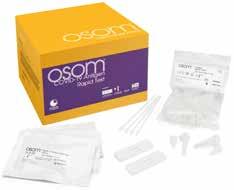
Comprehensive toxicology menu now with 14 CLIA 1 categorized moderate complexity assays.


Toxicology screening solutions for physician offices, pain management, treatment centers and laboratories testing 200+ patient samples/mo.
MODERATE COMPLEXITY ASSAYS – FDA 510(K) CLEARED
6-acetylmorphine (6-AM Heroin metabolite)
Amphetamine
Barbiturates
Benzodiazepines
Benzoylecgonine (Cocaine metabolite)
Buprenorphine
Cannabinoids (THC)
1. Clinical Laboratory Improvement Amendments (CLIA) / *

EDDP (Methadone metabolite)
Fentanyl*
Methamphetamine
Opiates
Oxycodone
Phencyclidine (PCP)
Tramadol
Scan this QR code to view the ImmTox™ 270 product video
From MyInspection
• Meets all CLIA compliance requirements
• No interpretation of CLIA regulations required – includes all policies, procedures, electronic fillable forms stored systematically for easy retrieval
• Remote access – manage individual or multiple labs remotely from your PC, tablet or phone
• Easy to audit and document changes with electronic signatures and dating
• Expert guidance from licensure to your customized documentation system
• Be, stay compliant and inspection ready – reduce time, cost, and stress
From Semler Scientific



QuantaFlo® PAD is an easy to use, accurate, point of care, non-invasive solution that aids in the early detection of peripheral arterial disease (PAD). This FDA cleared device can be administered by a medical aide in less than 5 minutes. As published in the Journal of Vascular Surgery and the American Journal of Preventive Medicine, QuantaFlo detected undiagnosed PAD in 31.6% of patients +65.1 QuantaFlo is portable and integrates with other technologies and platforms. It is ideal for both home and clinic environments.
1. Smolderen KG, Ameli O, Chaisson CE, Heath K, Mena-Hurtado C. Peripheral Artery Disease Screening in the Community and 1-Year Mortality, Cardiovascular Events, and Adverse Limb Events, AJPM Focus (2022), https://doi.org/10.1016/j.focus.2022.100016

from Newman Medical
Your Patients Trust YOU To Find Their Peripheral Artery Disease
• High-risk patients include those over 65, diabetics, and smokers.
• If left untreated, 25% of patients with PAD will experience a heart attack or stroke within 5 years.
• PAD symptoms are often mistaken for arthritis or old age.
The simpleABI Cuff-Link System is Easy to Learn and Use.
• With a push-button remote, automatic calculations, and waveforms, it’s incredibly user-friendly.
• Reports are straightforward to save and share since the system is PC-based. Outstanding Value and Reimbursements
• The system pays for itself in less than a year with just one test per week.
• Medicare reimbursements vary by exam and location, averaging from $91 to $174.














Whether you're craving pristine beaches or vibrant cities, these nine must-visit destinations around the world promise stunning scenery, rich culture, and unforgettable adventures for every type of traveler.
Tucked away on a private stretch of white sand and palm trees, you will find the iconic Harbour Village Beach Club. An oasis beloved by sun lovers, scuba divers, and seafarers alike. Our boutique Bonaire retreat captures the breezy, barefoot elegance of the Dutch Caribbean, consistently earning the title of “Bonaire's leading hotel” in the World Travel Awards.

SCAN TO LEARN MORE


Deeply rooted in the land, the history, and the layered richness of Oahu, at Turtle Bay you’ll find an authentic connection to a place of uncommon natural splendor and the warm, welcoming community within it. Where your days are filled with constant discovery and moments that touch your soul, allowing you to explore the uncommon depths of this remarkable coast.

SCAN TO LEARN MORE
Discover an elevated escape with the perfect balance of fun and relaxation at our AAA Five Diamond, luxury Orlando Resort. Splash around with the family at Explorer Island water park, or unwind beneath swaying palms at Oasis adult-only pool while we entertain your young ones at our complimentary kids camp. Treat yourself to a soothing, post-park massage at The Spa, then toast to the nightly Walt Disney World® fireworks views over dinner at our Michelin-starred rooftop steakhouse Capa.


SCAN TO LEARN MORE

Secrets Cap Cana Resort & Spa is a sophisticated, adults-only hideaway located in the exclusive gated community of Cap Cana Facing the clear Caribbean Sea along the white sand of the exclusive Juanillo Beach. Secrets Cap Cana Resort & Spa is proud to support the Punta Cana Promise as part of the ongoing commitment to ensure that guests will continue to receive the highest levels of service and security they have come to know and expect from Secrets Cap Cana. The Punta Cana Promise reaffirms the commitment to a set of security standards and safety guidelines in one of the top travel destinations in the Dominican Republic.

SCAN TO LEARN MORE
Balboa Bay Resort is Newport Beach’s premier waterfront retreat offering stunning bay views and sunsets over Balboa Bay’s harbor. It is the #1 Resort in Newport Beach per U.S. News & World Report, and it is rated as a Forbes Four-Star and AAA Four-Diamond resort.



At Desolation Hotel, modern conveniences and eco-luxury commingle with Japanese tranquility and Scandinavian design. Our one-of-a-kind South Lake Tahoe experience inspires adventure and invites tranquility, providing the right space to recharge your battery. Balancing reverence for the past with appreciation for the present, Desolation Hotel nods to the simple days of yesteryear, while modern technology serves as a quiet backbone to the entire resort experience.

Situated within the new 56-acre Water Street Tampa neighborhood, the hotel is home to 172 guest rooms and suites and 7 food and beverage venues, including a signature restaurant, rooftop bar and terrace. The property features a 204 sqm Penthouse Suite, expansive spa, fitness center and over 550 sqm of flexible meeting and events space. Bringing some of the world’s best talents together into one project, the property is designed by acclaimed New York-based architecture practice Morris Adjmi in collaboration with Florida-based firm Nichols Brosch Wurst Wolfe & Associates; with interiors designed by the renowned Roman & Williams, and the whole project underpinned by the creative vision of Ian Schrager and Ian Schrager Company.



Welcome to Four Seasons Hotel Nashville, a luxury hotel located in the heart of downtown’s vibrant SoBro neighborhood. This new social hub is just steps away from the city's iconic music, sports, and entertainment venues. Experience the rhythm of our lively restaurants and event spaces, the tranquility of our Spa, and the stunning views from our rooftop pool overlooking the Cumberland River and Riverfront Park. With the unmatched service of Four Seasons and warm Southern hospitality, we’ll inspire an authentic experience of Music City.

SCAN TO LEARN MORE
As one of the only non-gaming and non-smoking hotels on The Strip, Four Seasons Hotel Las Vegas is a unique oasis in the heart of the action-packed sports and entertainment capital of the world. Offering Five Diamond luxury accommodations, acclaimed dining and a Forbes Five-Star spa, Four Seasons offers the best of both worlds: a resort retreat amid the famous energy of Las Vegas.


SCAN TO LEARN MORE


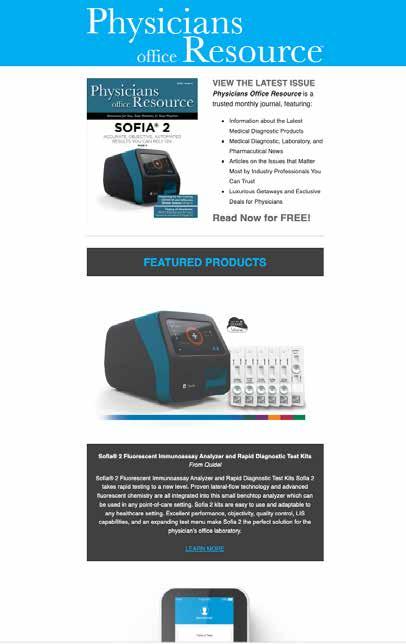



BY BRANDI BROWER, SENIOR TRAVEL EDITOR


I try not to do research before my travel destinations. Truth be told, I don’t even like to see photos of the luxury resorts or hotels before arriving. There are so few surprises in life that I enjoy the anticipation and pure joy that comes with the big reveal. My most recent surprise didn’t disappoint~ let me introduce you to Dominica.
In the beginning, I was confused, as I had never heard of the country before, a Windward island nation in the Lesser Antilles Archipelago located in the southeastern Caribbean Sea. What is often confused with the Dominican Republic, in name only, differs significantly in size, language, and historical influences. Dominica’s official language is English, with French Creole, due to historical French influence. The population is significantly smaller, around 70,000, compared to the D.R.’s population of over 10 million, and it feels small, at times, like you are the only person on Earth. More on that later.
As I sat on the plane, just over a three-hour flight from Miami, I conversed with a woman sitting next to me who turned out to be born and raised on the island, currently working in Canada. I told her the farthest south I’d ventured in the Caribbean had been to the island of Nevis. I shared how much I loved the people there, the striking volcanic peak, and the lushness of the West Indies destination. She began to giggle. “What?” I asked. She motioned for me to raise the window shade as the flight attendant announced our initial descent into the Douglas-Charles Airport. I raised the blind as our jet hovered over mountainous terrain, passing over several volcanic peaks, banking to the left to line up for approach. The visual looked like the captivating helicopter scene in the film Jurassic Park. “This is lush,” she grinned. “This is my country.”
Her country is Dominica, known as the Nature Isle of the Caribbean, due to its pristine natural environment, mountains, rivers, waterfalls, and rainforests. Most of the territory of this country is virgin, with a tropical forest that is the only Caribbean World Heritage Site named by UNESCO. A few fun facts:


With nine active volcanoes, Dominica holds the distinction of having the world’s highest concentration of volcanoes, which contributes to its beautiful black-sand beaches. Dominica is home to numerous waterfalls, with 12 notable and easily accessible, and over 365 rivers on the island, a river for each day of the year. The gorgeous flora and fauna thickly cover every inch that isn’t H2O. The very definition of lush is this hidden gem in the West Indies.
My driver, Frank, collects me for the hour-long drive along the very hilly and winding road to my final destination. Like the woman on the airplane, Frank was born and raised but has never left his homeland. I also interviewed him about life on Dominica. “What’s the best-kept secret about your country?” I ask. “The cuisine is indigenous to us; we enjoy what we grow naturally.” After a pleasant conversation, I end with one last query: “What would you want the world to know about Dominica?” “That’s an easy one,” he chuckles, “Look around us. The natural beauty. I see it every day and I’m still fascinated by it.” His answer timed perfectly as we pulled into the well-manicured gated entrance. As I exit the van and head to the open-air Mouben Welcome House, I’m greeted by Dianna with a chilled lavender-infused towel and a cold Lemongrass and Lime drink. “Welcome to Secret Bay!”
The surprise, the big reveal is Secret Bay Resort and Residences, a private retreat nestled, literally tucked within, the very verdant, lush landscape on the northwest coast of the island. I’m introduced to my dedicated villa host, Elena, who assists with my bag onto the Caribbean’s longest funicular, ascending 400 linear feet, accessing the villa enclaves: Clifftop, Summit, and Hillside. It’s a great introduction to the lay of the land, a literal birds-eye view as the energy-efficient open-air carriage

climbs up the steep incline, allowing passengers to take in the scents, sights, and sounds of the rainforest.
My flight was a bit delayed; as a result, I was rushed to the official launch event. It was humbling to find the celebrated staff, distinguished guests, and members of the press all in their seats awaiting one last, lone member of the media to arrive. Me. A humbling moment to keep the Prime Minister of Dominica, Honorable Roosevelt Skerrit, waiting. The popular P.M., governing the country for over 21 years, has been a supportive force in the success of Secret Bay. He has championed the boutique eco-luxury resort, standing in solidarity with the founder’s vision. The ceremony marks the beginning of a new chapter for the special property, the official ground-breaking of nine Waterfront Villas. Prime Minister Skerrit spoke of the Citizenship By Investment program, “For those seeking more than just a vacation home, Dominica stands out as a long-term sanctuary; safe, sustainable, and serene.” Wait, what? Can I own a piece of this paradise? The answer is yes. Secret Bay offers both whole and fractional ownership opportunities with its villas. An investment not only gives you a desirable destination to escape to, but a second passport as well. The Prime
Minister continued, “Dominica is not trying to become like everywhere else, we are not chasing mass tourism nor will we allow unchecked development to erode what makes this island so rare.” The Prime Minister noted, “We are cultivating a niche; luxury rooted in nature, in culture, and community,” explaining they are charting a course that balances economic opportunity with ecological responsibility. Honorable Skerrit concluded his remarks, saying, “This is how we will protect our identity, uplift our people, and ensure that generations to come can inherit a land that is still unspoiled, still extraordinary, and still Dominica.”
I’ve only been on the island for a little over two hours, and I’m already inspired. The all-villa retreat has a beautiful origin story, as told by proprietors Gregor Nassief and his wife, Sandra Vivas. Gregor, as a young boy, fell in love with the property that Secret Bay is on. He grew up climbing the cliffs and exploring the land. As the boy became an adult, it took 20 years and seven different transactions to purchase the first five acres of land, which Secret Bay is on. Gregor shared his love of the land with his wife. As a wedding gift, Sandra’s father, renowned Latin American architect Fruto Vivas, gifted the couple a design to
build a home on the land. Sandra shares that her father isn’t known for his architecture, but rather his “architenderness,” reflecting her father’s theory that a house is a space for human interactions but also a connection with nature. The tapestry of a love story: a boy and the land, a man and a woman, and a father for his daughter, woven together to create a slice of paradise for the world to embrace.
This passion project of mindful environmental awareness and “architenderness” has grown over the years, always preserving the ethos of low density, intimacy, and connection with the natural environment. The 50 acres of land are dotted with 23 strategically placed stand-alone villas, perfectly positioned so as not to disrupt the lush landscape, offering both panorama and privacy. The exclusivity of this escape is evident. Dare I share, I went skinny-dipping every day in my private plunge pool, with no thought that I’d be discovered. Most of us wanted a tree house when we were young. This villa feels like a treehouse for adults, with amenities you never imagined as a kid, but Secret Bay has reimagined everything.
The freestanding structures are more than a hotel suite; they are home. My hidden hideaway, “Zubuco,” is the honeymoon villa layout, which would be my hilltop home away from home for the next few days. Elena, my villa host and personal concierge, handed me an iPhone, which enabled me via WhatsApp Messenger to text her with any/all requests. The handheld tech facilitated electric golf cart rides, reservations, and turn-down service; I even used it to request my packed lunch for my waterfall excursion- service with an emoji smile. Each villa offers breathtaking western views of the Caribbean Sea, a spacious terrace featuring covered outdoor dining and lounge areas, an infinity plunge pool, decking, outdoor shower, and a hanging duvet outdoor bed; it’s not your grandpa’s hammock. That’s just the outdoor living space. Inside the villa, you’ll find all the state-of-the-art amenities you could wish for, including a gourmet kitchen equipped with Siemens and Smeg appliances, a De’Longhi espresso & cappuccino coffee maker, a wine fridge, a fruit juicer, and a panini press. The aesthetic is biophilic design, an approach that seeks to connect people with nature in built environments. The vaulted ceiling, the natural light via numerous windows, and the entire interior are crafted with Guyanese hardwood. The white drapes, comforter, and cushions serve as an accent against the natural wood. Stylish bathrooms feature rainhead, handheld, and body spray jets, and for bathers, a large soaking tub. A convenient washer/dryer combo, Sonos wireless sound system, high-speed WiFi, and smart home technology, hand-crafted furnishings from Dominican Red Cedar by local artisans, and a 43” TV that you may never turn on because your childhood treehouse fantasy is now a reality at Secret Bay.
The Bwa Denn is the heart of the resort, where food, art, and community converge. This modern, minimalist space blends luxury with nature and sustainability. Not only does it house the restaurants, a full-service bar, tapas terrace, a kombucha microbrewery, and a gift shop, but it is also home to Gregor’s extensive art collection of 100+ Caribbean and Latin American art pieces, serving as the inspiration for the interior design. The




couple’s mutual love of art brought them together. Sandra is an artist. Gregor purchased one of Sandra’s pieces, and so their love story began. Gregor explains, “I have a very deep love for land, Sandra has a very deep love for architecture.” It was a complete “accidental adventure” as their unified vision came together. They have melded their love of art, land, and architecture into Secret Bay.
The response to their “accidental adventure” has been overwhelming. The awards and accolades for this 6-star hotel are numerous, including being named the #1 or #2 resort in the


Caribbean, Bermuda, and Bahamas category in Travel and Leisure’s World’s Best Awards for five of the last six years, ranking among the top 100 hotels worldwide. Secret Bay is also a Relais & Chateaux property, a prestigious association of luxury hotels and restaurants globally.
There are no tennis courts. No golf courses. If you’re a pickleball enthusiast and have an itch to play, you’re in a pickle. The idiom suggests that the country club clichés are not typical in Dominica. Nature is the playground for this getaway destination. It’s a haven for those who love hiking, adventure, waterfalls, hot springs, diving, water sports, whale and dolphin watching, and canyoning adventures. With more than 300 miles of hiking trails, 365 rivers, and over 170 bird species, Dominica offers an unparalleled escape into nature.
The first adventure begins with our guide, Shevon, and a hike to Syndicate Falls. He points out plants and their medicinal properties, acts as a safety guide offering a hand when needed as we cross several rivers, and serves as an action photographer, capturing the moment as we swim in the lagoon and stand near the powerful spray of the 100-foot waterfall. Once back in the van, we enjoy our packed lunch of a chicken sandwich on homemade bread, fruit, and nuts provided by the resort, while we drive to our next stop, Portsmouth. The second-largest town on the island, located at the mouth of the Indian River, is where our following guide, Fire, takes us on his colorful dugout canoe, propelled by hand oars. A tranquil way to travel the wide river while the Captain Fire points out diverse wildlife among the mangroves, in addition to sites where scenes from the Pirates of the Caribbean movies were filmed. Last adventure of the day, we board a boat with an outboard motor that whisks us from the Indian River out to the ocean. As we speed along the Caribbean Sea, we can barely distinguish the rooftops of the Secret Bay resort, as it is so well blended in with its surroundings—a promise made by Gregor and Sandra to eachother that if they ever built something on this land, when you passed by and looked from the ocean, you couldn’t see anything. Promise kept. Our guide pulls the canoe up to a beautiful white sand beach, one that can only be accessed by boat. Its name is Secret


Beach, and the genesis for the Secret Bay, the dream of a boy who once played along its shore.
As Fire zooms away, we are the only people on the Secret Beach. We swim in the arched cove, in the clear tepid water, all alone, with the natural rock formation called “drinking horse” as a backdrop. It looks like a massive horse drinking the ocean. When we are finished with our “blue lagoon” experience, we board the two kayaks that were pre-arranged by the beach staff to be waiting, and we paddle our way around the “drinking horse” to the resort beach on the other side.
After taking a swim in the resort’s Gwiyavye’ Lap Pool, we venture down to the lounge chairs to take in the view of Tibay Beach. Zamann Watersports Hut provides all non-motorized equipment. We enquire about snorkel gear, and a staff member, Kenny, asks if we want to explore a cave. Yes, please. There’s a bounty of beautiful fish offshore. Kenny is very knowledgeable about the underwater wildlife, as he shows me how to hold a crab between my two fingers so I won’t get pinched. He dives down deep to point out camouflaged fish that we couldn’t see and warns us about the sea urchins and lion fish that we can see but should be cautious of. With the special water shoes and flashlights provided, we swim in the tight crevices. He coaches us on what to do next, guiding us as we dive down, holding our breath, and popping up on the other side in a bat cave. Hundreds of little creatures hanging upside down, some flying around, I was not a fan. But this is a special place, this Dominica. It’s a place you can step out of your comfort zone, to swim near crashing waterfalls, hold a crab, and explore a bat cave. It sure beats hitting a tennis ball.
Feeling like we dominated Dominica, we deserved a delicious dining experience. Thanks to the newly appointed Executive Chef, Aurelien Bulgheroni, we were not disappointed. Frenchborn, trained at Michelin-star restaurants in Monaco, and has
been criss-crossing the globe with his culinary artistry until he landed at Secret Bay’s Bwa Denn Kitchen. Guests can indulge in island-to-table cuisine, fresh vegetables sourced from the property and neighboring farms, hand-caught local fish, organic poultry, and farm-raised meats. The tasting menu on this night was French Creole-influenced. Gastronomy delights included: a plantain and cod fish croquette, marinated chicken with red bean puree and creole flavors, marinated mahi-mahi in a coconut curry sauce served with local vegetables, and for dessert, a pumpkin mascarpone pie served with cinnamon rum pineapple. As if the meal wasn’t perfect enough, we dined al fresco, with low light pollution, the stars were our dinner guests as Chef Bulgheroni came to our table to ask if we were enjoying the evening. I complimented him on the incredible coconut curry sauce, and he thanked us with his beautiful French accent.
As if the day couldn’t get any better, I retreated to my hilltop home, where my villa host had pulled the wispy drapes on the three walls of windows in the bedroom, turned down my bed, left fresh-cut fruit in the fridge, homemade yogurt and granola for my breakfast, and ironed my dress, I’m feeling a bit spoiled.
I wake up and gaze out at the foot of my bed, taking in the blue water and green flora that beckon me. I open the glass door and sit out on the comfy lounge chair, listening to the morning song of the birds. As if I’m Eve, in the Garden of Eden, without a fig leaf, I swim to the edge of the infinity pool. I’m entirely in the moment. Nothing is in my head except peace. This is what being completely disconnected feels like. What a gift.
A fantastic night’s rest, I enjoy the delicious breakfast that Elena curated and left for me the night before, and I’m ready for another adventure. Today, our guide is Randall. He takes us to Ti Tou Gorge, where we swim through the narrow waterway, a fern gully, to the end, where there is a waterfall. We are all alone at this incredible spot, admiring the force of nature as the water pounds and echoes in the gorge. We swim back and ride the van to Trafalgar Falls. A small hike brings us to the base of the two falls, nicknamed Momma and Papa, because they are two distinct falls next to each other. Randall takes us to the village of Wotten Waven, well-known for its natural hot sulfur springs and mud pools. We hop from really hot to not as hot to a cold plunge, then repeat. We eat our box lunch while Randell takes us on a tour of the capital city of Roseau. We arrived back at the resort just in time for my spa treatment. The walk from the Mouben Welcome House, past the open-air fitness facility, up to the Gommier Spa is charming. Stone steps lead past the Bwa Mang Wellness Pavilion, up, up, up I continue until I arrive at a three-sided treatment room, built with Guyanese hardwood, another beautiful structure that rests among the trees and overlooks the ocean. What an incredible place to receive a relaxation massage. Rachel is my therapist, with 15 years of experience, and the sound of the rainforest and the waves lapping up on the shore, I was thoroughly entranced—another perfect day.
Secret Bay Resort is exceptional because the guests feel an authentic connection with the staff. Gregor believes that many
Caribbean islands have a high level of overtraining in the hospitality industry, observing that some hotel staff exhibit personalities and kindness that are more trained than genuine. “Many of our staff have never worked in a hotel before. However, they possess a natural friendliness and sincerity, a personality that makes them more capable of taking care of guests than those with professional experience in the industry.” Gregor continues, “The sincerity, authenticity, and kindness of the service trumps the perfection all the time.” I experienced this authenticity several times during my stay. While dining at the restaurant, I suffered a painful cramp in my hamstring. Our sweet server, Gaielle, promptly came over to help as I was twisting in distress. She encouraged me to stand and maneuvered my leg, demonstrating a particular stretch until the affliction subsided. She explained that she is trained as a physical therapist. Her quick reaction to help me in that moment is the exact authentic kindness that Gregor is talking about. Every member of the staff I came in contact with — the wait staff, golf cart drivers, excursion guides, beach staff, and my villa host — each interaction and connection with me was genuine.
On my last morning, while showering, I opened the sliding door within the glassed enclosure, exposing the garden and growth outside the villa. As the water poured over my body, I saw two hummingbirds, drinking nectar, traveling from flower to flower, soaking in the sweetness that nature has provided them. Wrapped in my resort robe, I step out onto the deck, and nature shares one more parting gift — a brilliant rainbow, its colorful bands extending into the rainforest, arching over the villa rooftops, a positive and hopeful symbol. Dominica, Nature’s Island, shared her bounty with me, and a sweet farewell.
There are so few surprises in life. But this island, this Secret Bay Resort, has been a memorable one. A secret reset, a place where few know, but those who do, cherish it.
Psst... I’ve got a secret. Pass it on.




Respiratory season can pose a real threat to your patients, especially the elderly. Fast, accurate diagnosis and treatment is one way to protect them and get them back to doing what they love. Having the right diagnostics in your office can help you deliver a higher level of patient satisfaction and improve efficiency.
Our product portfolio includes high-quality, point-of-care molecular and antigen tests for diagnosing respiratory illnesses.
We make diagnostics that matter because we believe each test represents the health and well-being of a real person.
